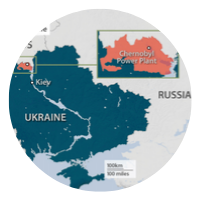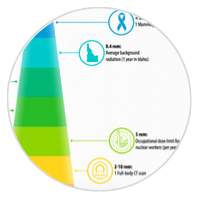HBO's Chernobyl
Miniseries
In 2019, HBO released a five-part drama on the Chernobyl nuclear accident. HBO states the series, “dramatizes the story of the 1986 nuclear accident,” and the sacrifices that were made to save Europe from “unimaginable disaster.” The dramatic series has sparked questions by the public about whether such an accident could happen here in the United States, along with intense media coverage about the safety of nuclear energy and radiation. Experts have criticized the series’ portrayal of acute radiation exposure, noting that the series exaggerated numerous aspects such as inferring that radiation is spread like a communicable disease.
As the nation’s lead nuclear energy research laboratory, Idaho National Laboratory has extensive experience developing, demonstrating and evaluating different reactor concepts; handling nuclear fuel and materials; conducting post-accident analyses; and keeping employees and the public safe from radiation exposure. We are compiling resources to help answer the public’s questions about Chernobyl, nuclear safety and radiation. Information will be added here as it becomes available.

Chernobyl: What happened?
Chernobyl is widely considered the world’s worst nuclear disaster. On April 26, 1986, operators conducted a loss-of-power cooling test on Reactor #4. During the test, managers ordered them to violate safety protocols. Attempts to shut down the reactor exposed a design flaw that triggered a power surge, causing two explosions. The cover plate and containment function failed, and the resulting fire was not contained until 10 days later.

Radiation Dose Comparisons
Each of us is exposed daily to radiation from naturally-occurring sources in our environment and in the foods we eat, as well as from cosmic radiation from space. Additional radiation can come from medical procedures to address conditions with serious health risks. Exposure to very high doses of ionizing radiation given at a fast rate (seconds to minutes) can damage living tissue beyond repair. This chart compares ranges of doses from the Chernobyl event (left) with doses from natural, occupational or medical sources.


